 INFRASTRUCTURE INTERDEPENDENCIES SIMULATION (I2SIM)
INFRASTRUCTURE INTERDEPENDENCIES SIMULATION (I2SIM)
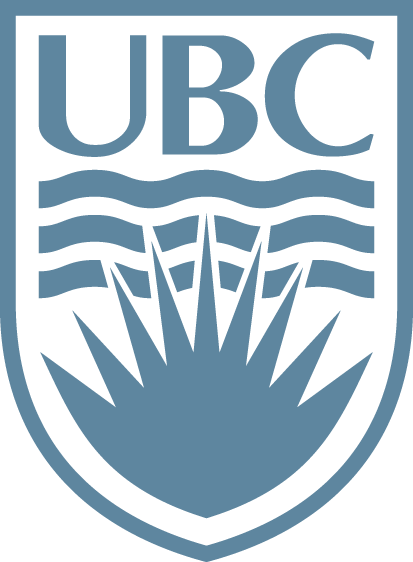

 INFRASTRUCTURE INTERDEPENDENCIES SIMULATION (I2SIM)
INFRASTRUCTURE INTERDEPENDENCIES SIMULATION (I2SIM)


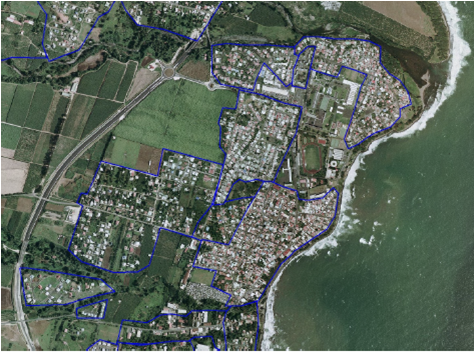
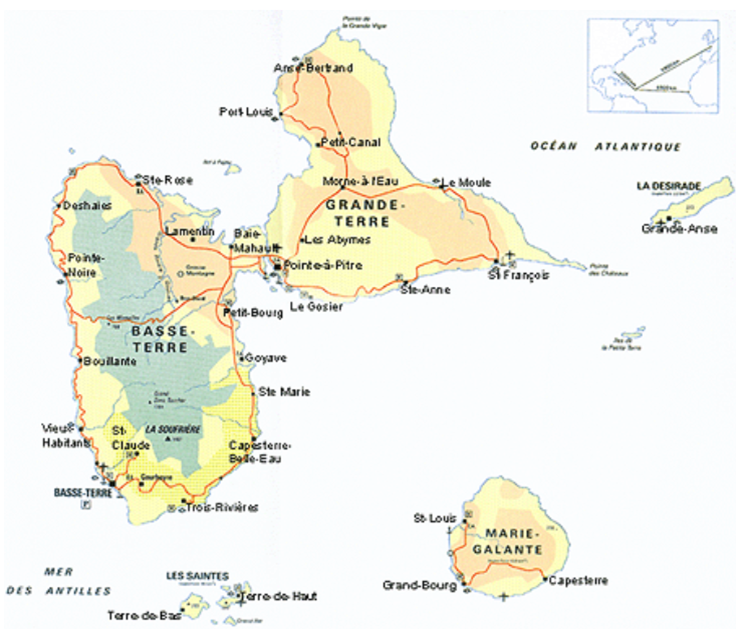
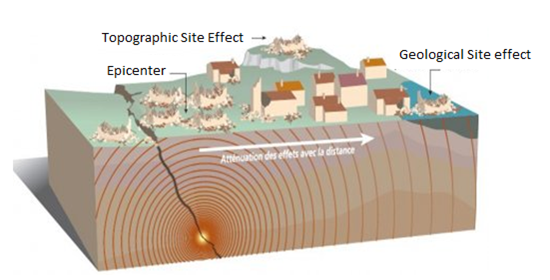

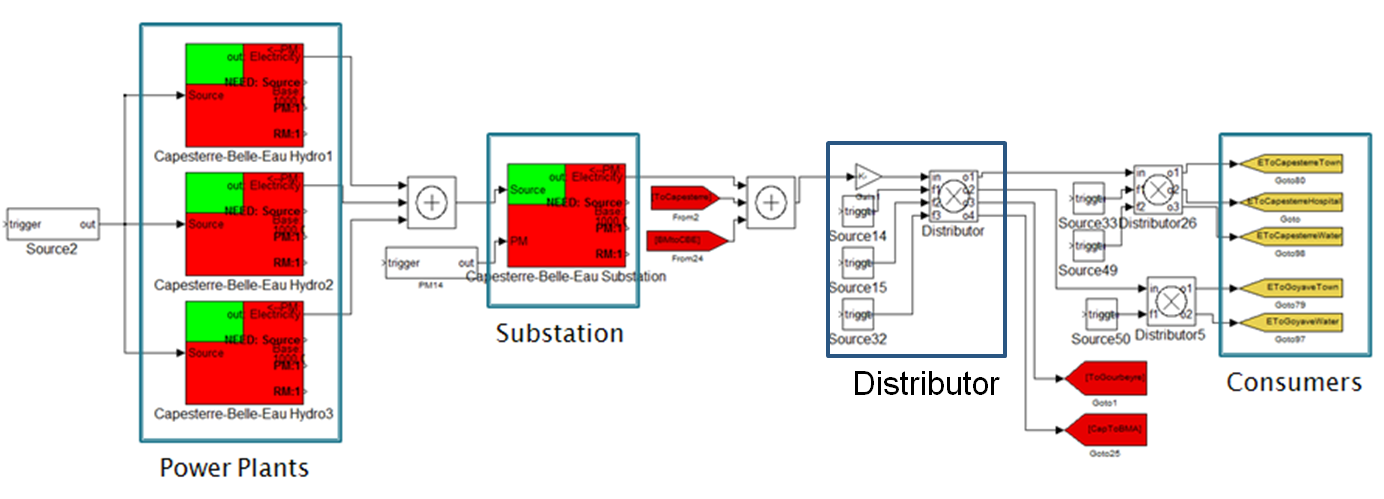
I2Sim representation of the Electrical System
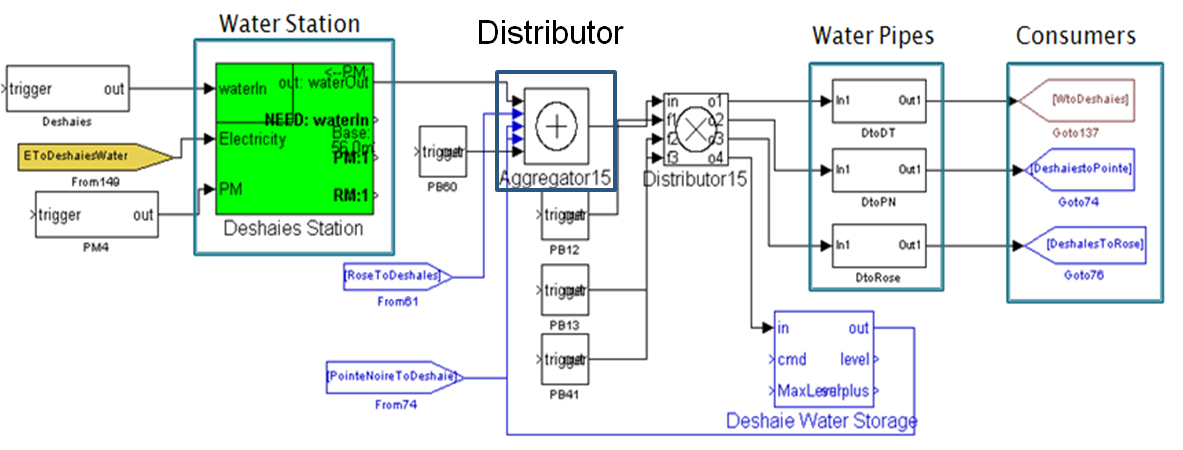
I2Sim representation of the Water System
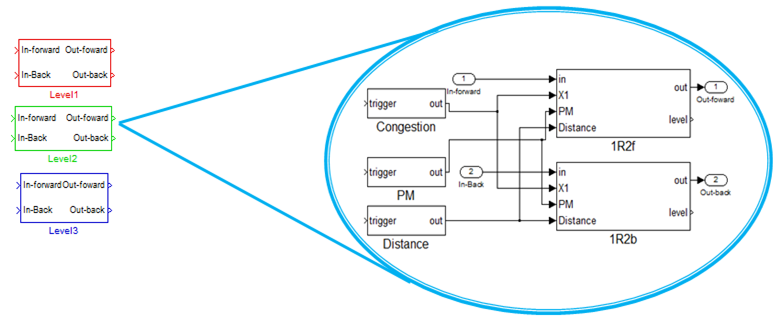
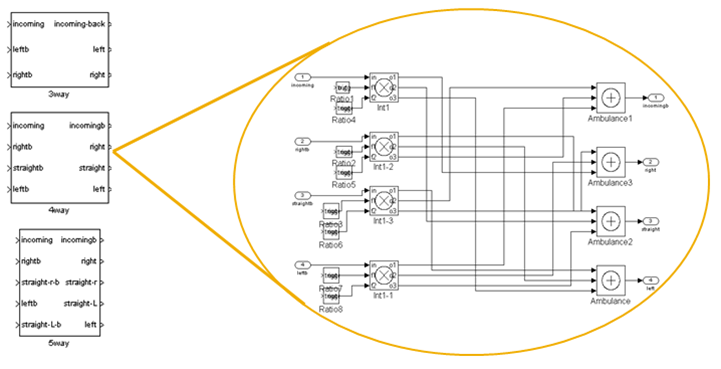
I2Sim representation of the Transportation System
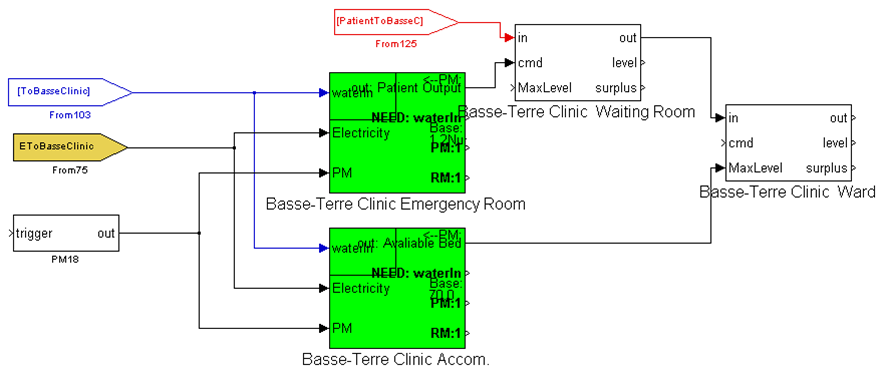
I2Sim representation of the Health System
From the study of the island, there are some conclusions that can be drawn from the results:
I2Sim was selected by DRDC (Defence Research and Development Canada) to model critical interdependencies scenarios in the Vancouver 2010 Olympic Games
The following scenario was considered:

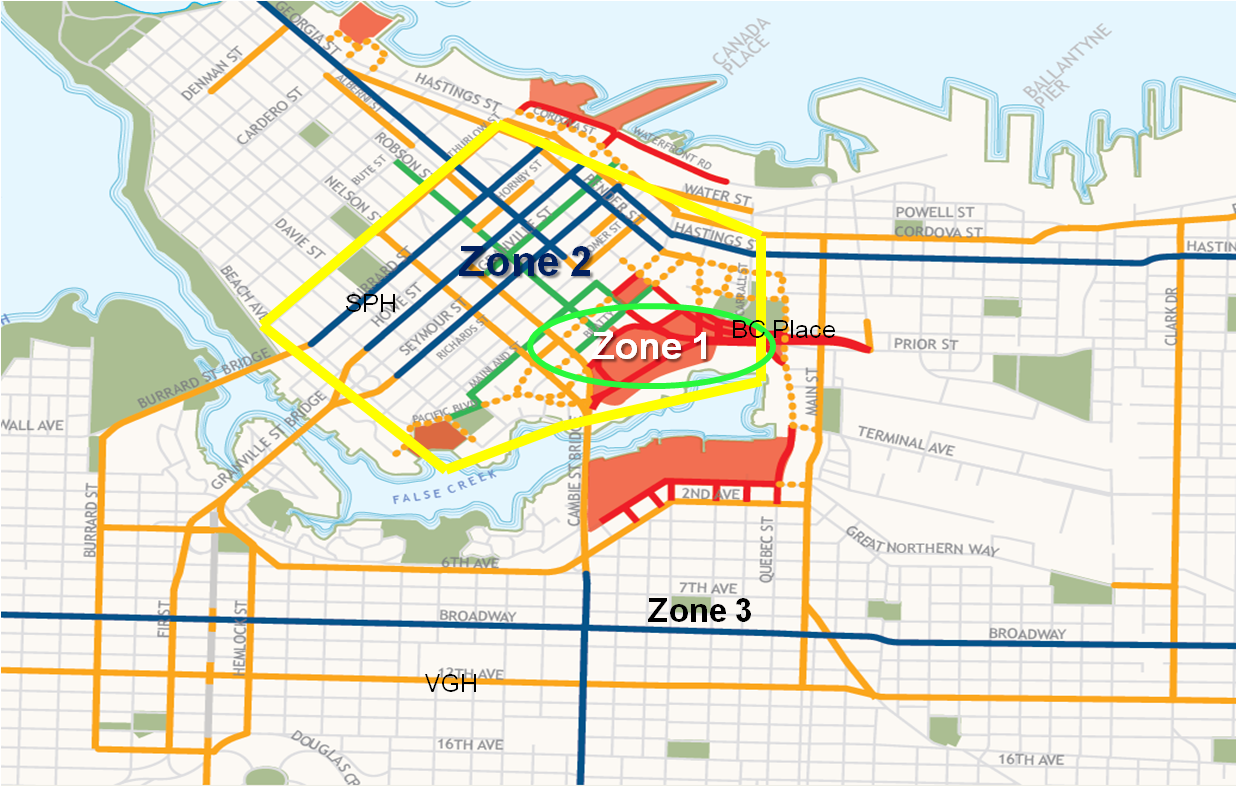
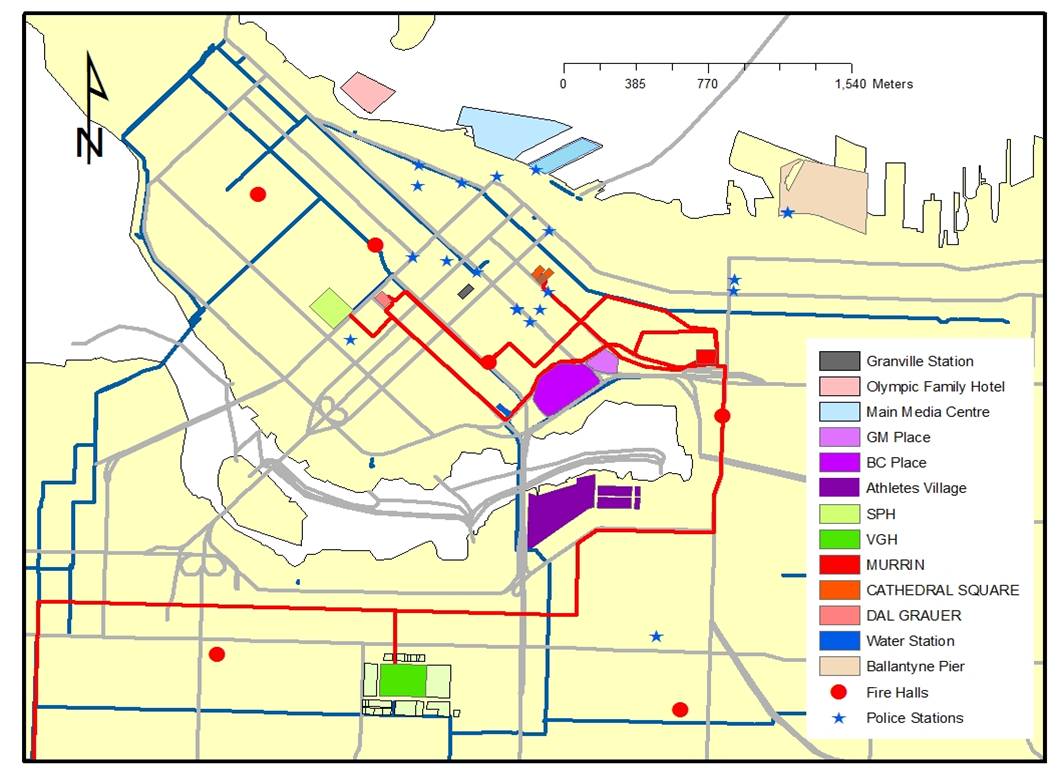
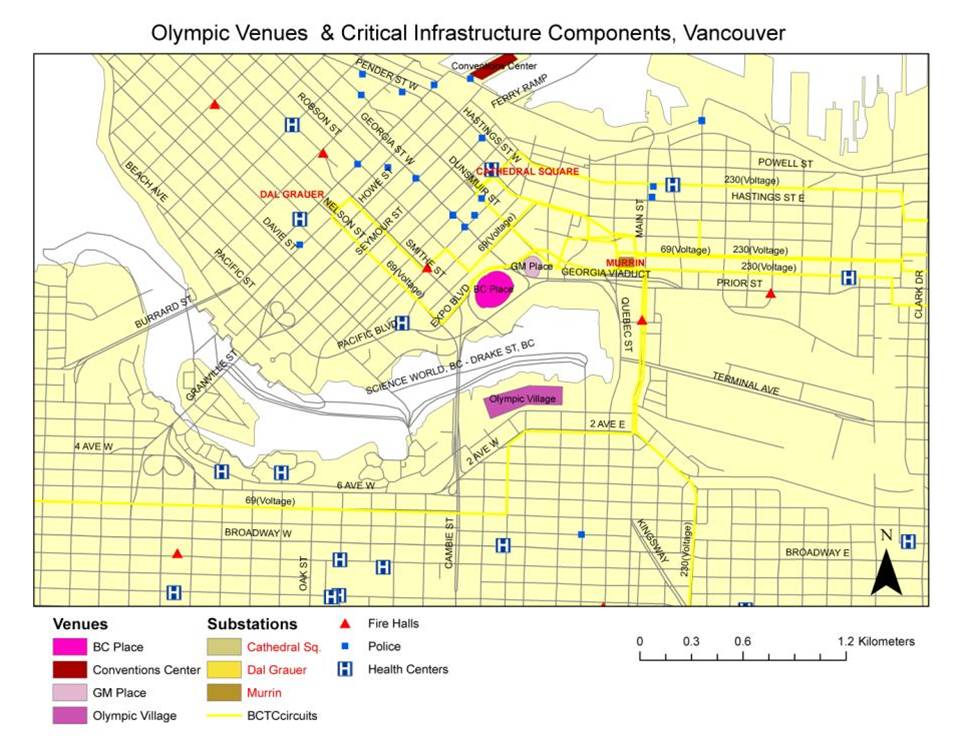
Disaster Event in the Study:

Simulation

I2Sim Model for the Olympic Case
Determine the time to assess victims on site and treat them at available hospitals in Metro Vancouver. Estimate casualties due to delays in getting treatment.
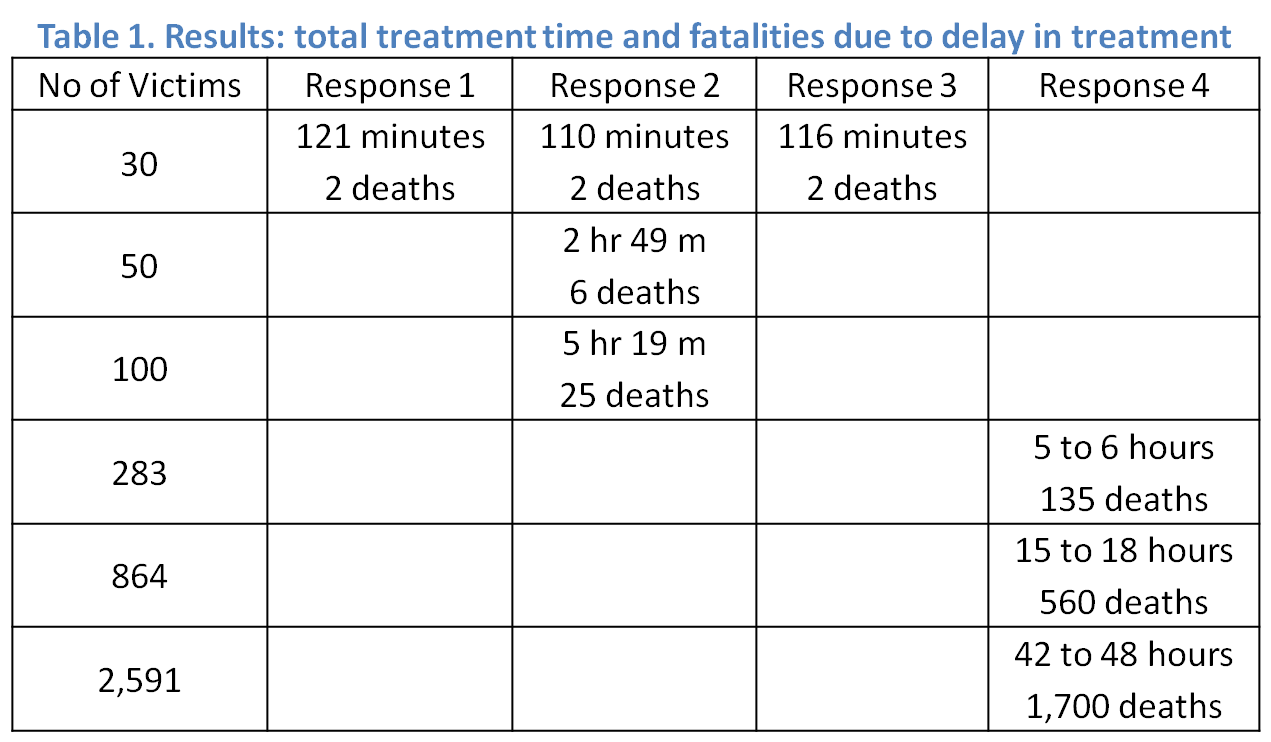
In this case, depends on different variable, different rescue plan can be developed
Background:
Purpose of using I2Sim/DR-NEP
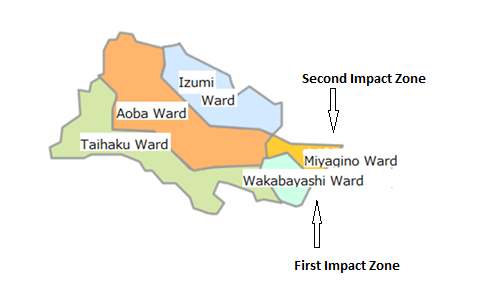
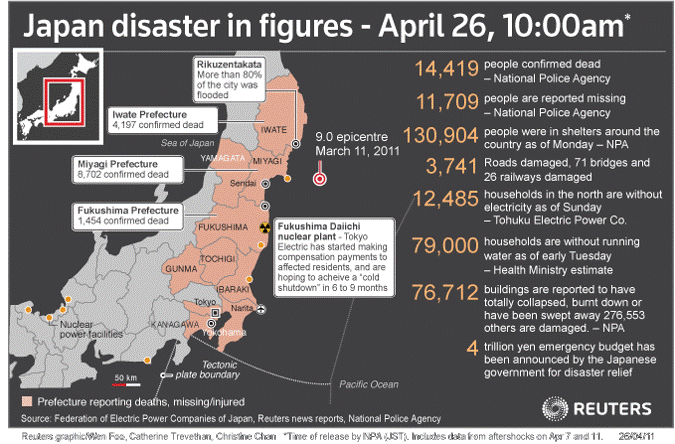
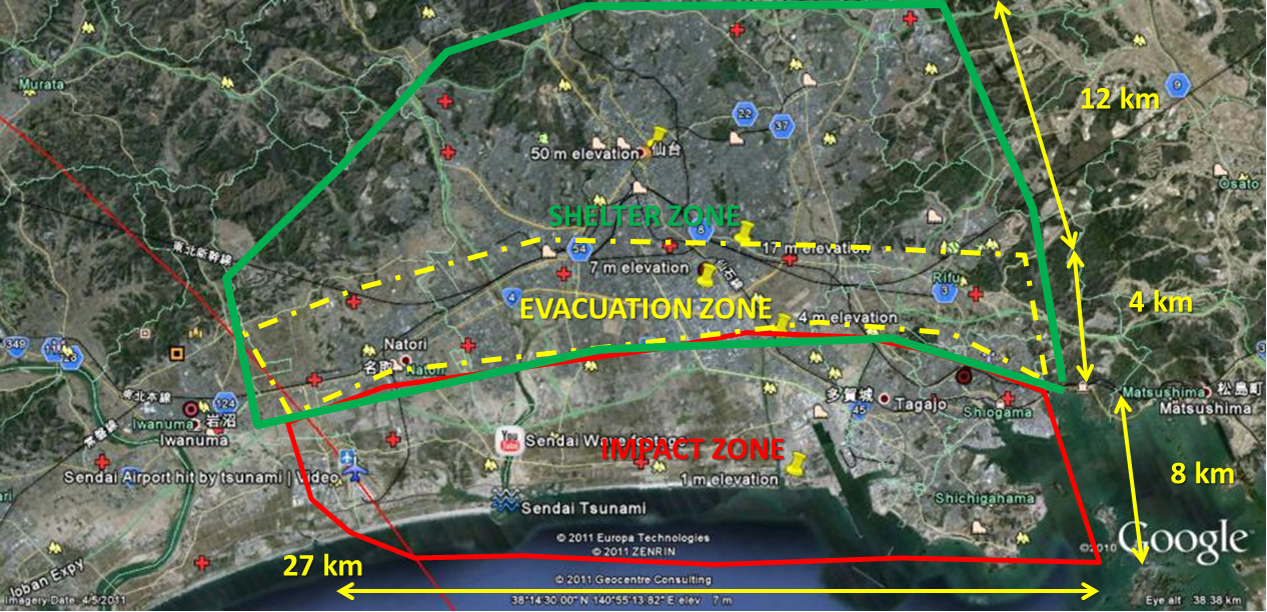
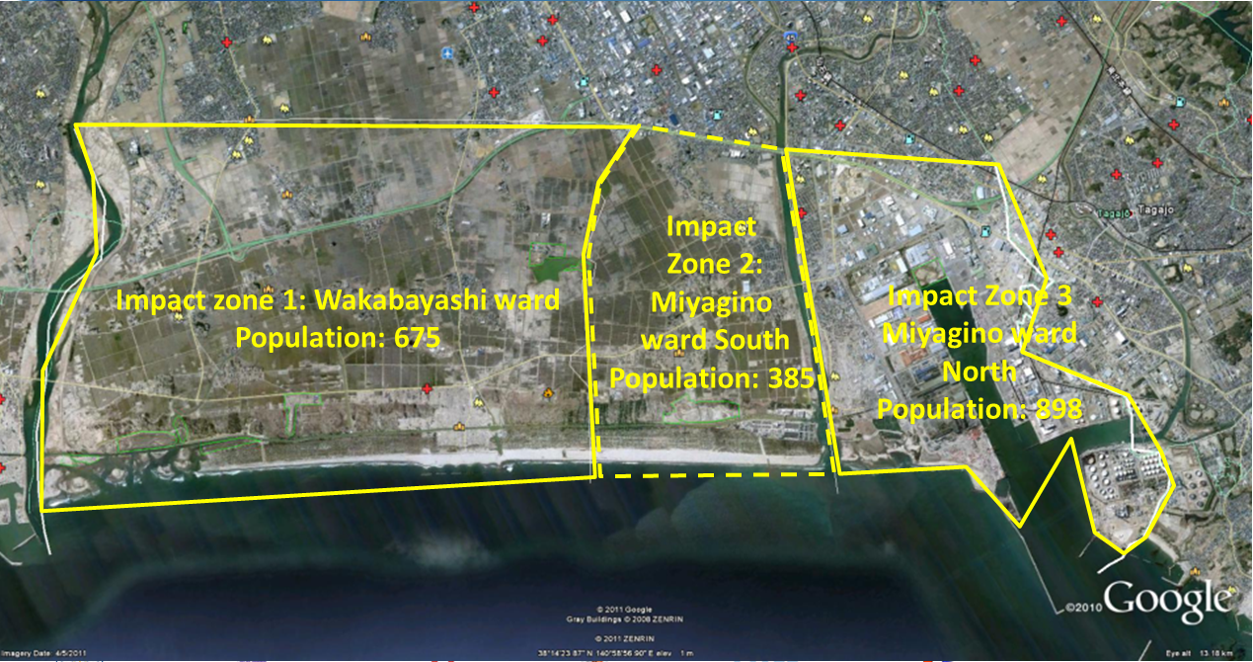
After we collected necessary information, we came up this concept model and implemented in i2Sim.
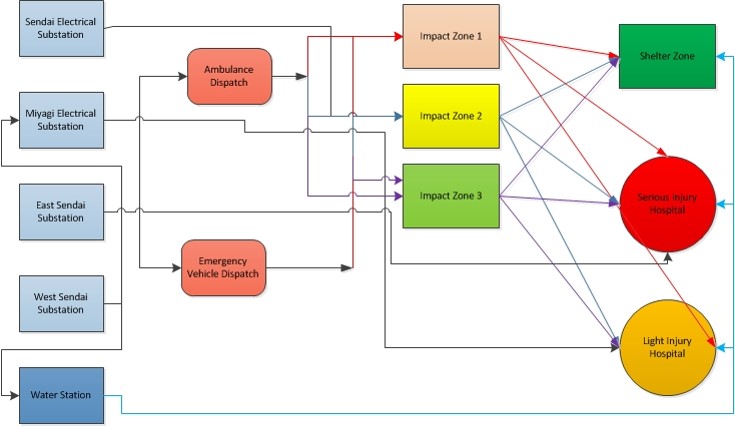
Concept Model for Sendai Study
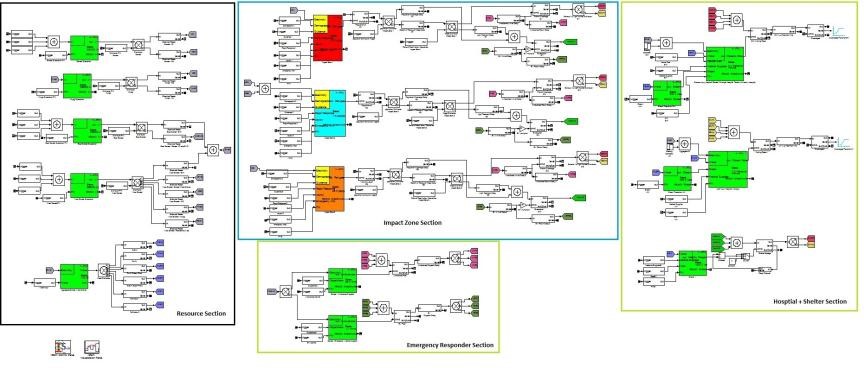
I2Sim Realization of the Concept Model

Google Earth Representation of the Sendai Model
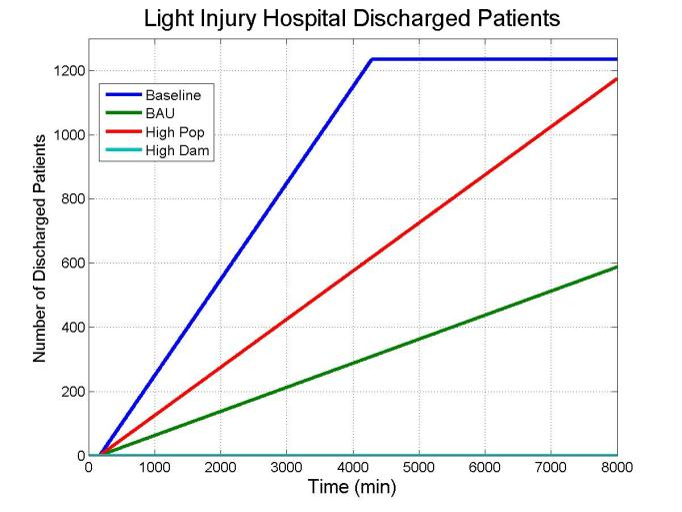
Simulation Results Based on different Emergency Response Plans
As shown in Simulation Results figure, the number of discharged patients using different strategies is plotted against each other and some interesting facts can be observed. The result of the scenario without damage case is the best performance that can be achieved for obvious reasons. Surprisingly, the High Population strategy achieved the best results among the other three strategies. Looking into further detail, allocating the electricity to the higher population density zone, effectively utilizes the electricity to speed up the evacuation process. The BAU case, on the other hand, does not perform well due to lack of water. With normal distribution ratios, the water station receives less electricity and therefore produces less water. Since both water and electricity are key factors to hospitals, water soon becomes the limiting factor and will significantly reduce the patient discharge rate. The High Damage strategy seems to be the choice of common sense. Supplying more resource to the highly damaged area would possibly help speed up the evacuation process. Based on the simulation results, however, is certainly not the case. With more damage, the Physical Mode of the impact zone is very low. Electricity is no longer the limiting factor. Instead, the physical status of the impact zone affects the evacuation rate. By supplying more resource to this region, the resources are simply put to waste.
Steam Incident, Dec. 7th, 2006:
Operational Condition:
How can the infrastructure be improved?

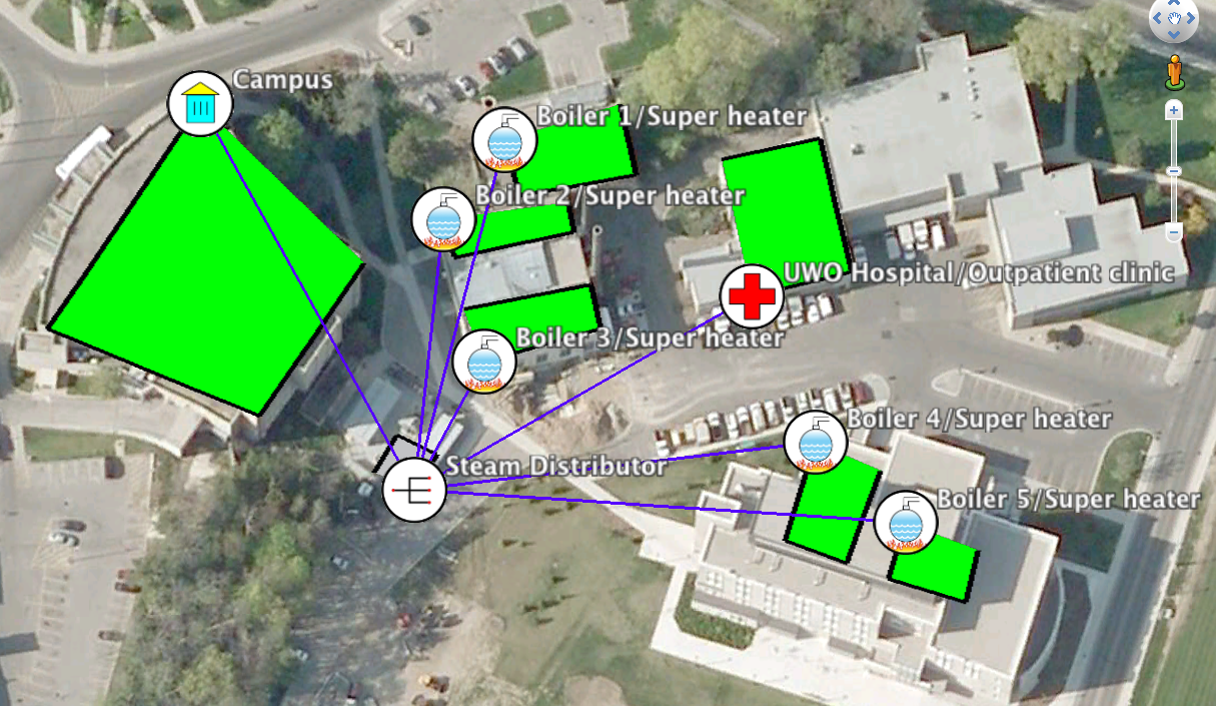

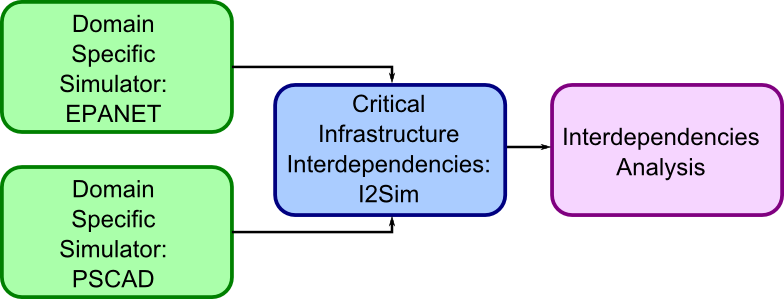
We integrated another system into DR-NEP to assist decision making
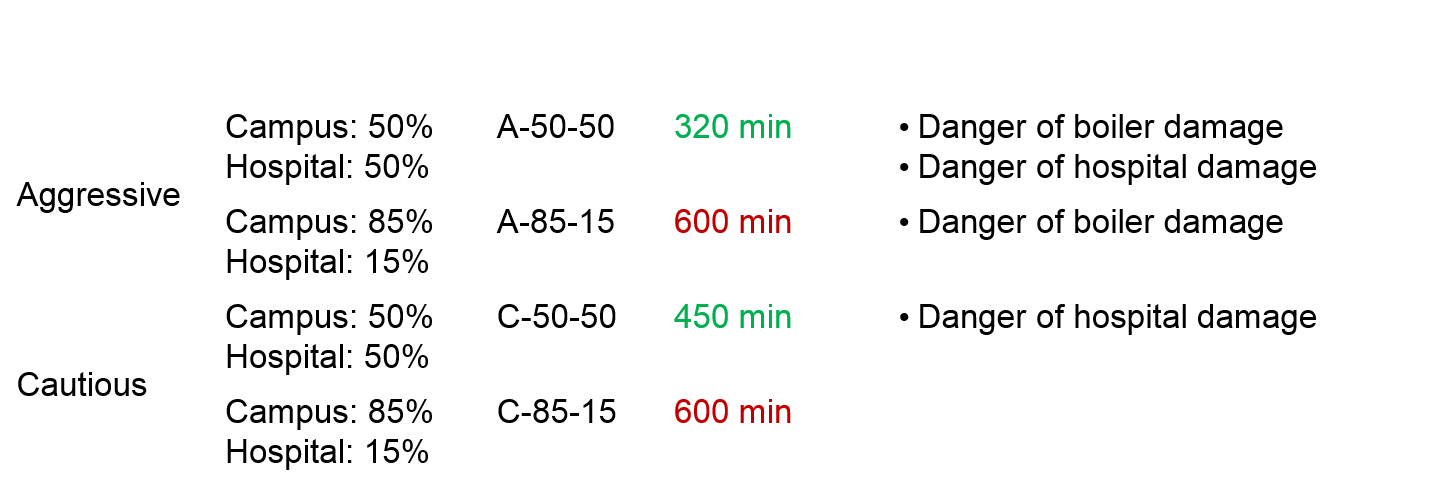
UWO Simulation Results
Based on the observation of the simulation, we found out that equal distribution of steam gives a significant time reduction without danger to the boilers.
It is time to leverage the smart meters data and advanced communication and control techniques to improve the performance of electricity distribution systems to realize the so-called smart gird. Simple algorithms are developed to disaggregate the load at the smart meter level to generate an accurate load model at each node in the system. The load data is then synthesized to create a voltage-dependent load model. This model is taken advantage of to form a set of linear power flow (LPF) equations. The LPF formulation is then utilized within optimization routines to perform tasks such as distribution network reconfiguration, capacitor placement, voltage-VAR optimization (VVO), etc. The objectives of the optimization routines are loss reduction, voltage profile improvement, load balancing among feeders, peak shaving, and so on.
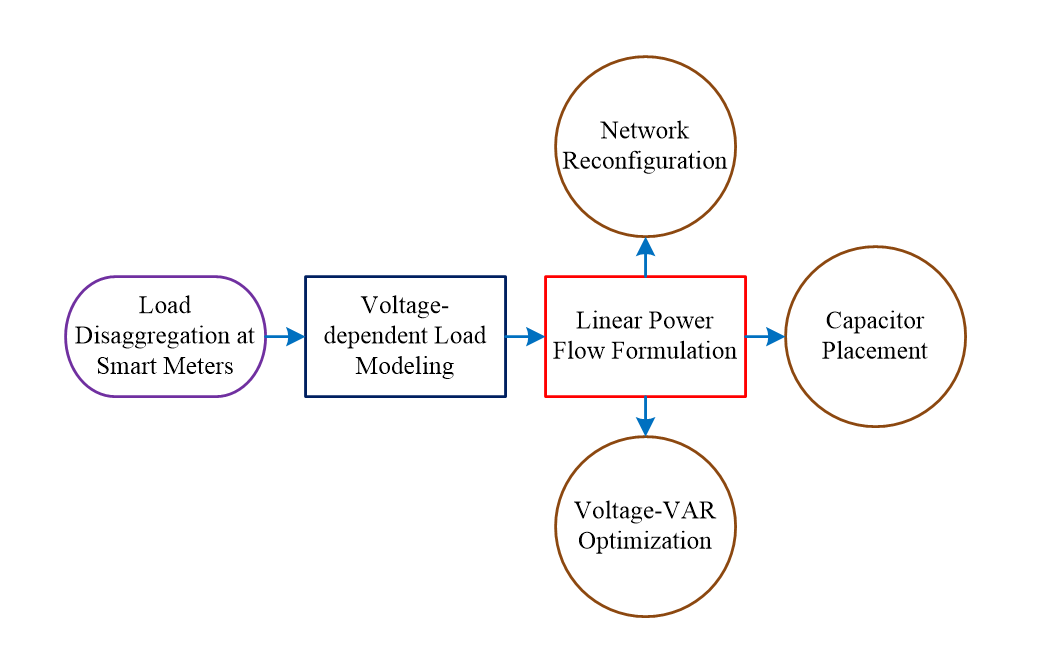
Modern Distribution Systems Analysis and Optimization Flowchart
by Hamed Ahmadi
The mission of this project is to improve reliability and resiliency of the future power grid. I am working on research projects that involve aspects of power distribution network’s reliability, and critical infrastructure protection as these are key elements of the future Smart Grid. Smart Grid is envisioned to have a self-healing characteristic that maintain high reliability of power supply to critical infrastructures such as hospitals. My emphasis is on developing restoration algorithms that will maintain power supply to these critical infrastructures in case of disturbances in the power grid. Addressing this goal requires developing new tools and approaches in solving the power restoration problem. In my work, I am developing a new approach in formulating the power restoration problem. In this new formulation, interdependencies between different infrastructures are taking into consideration. For example, a hospital dependency on water is included in developing the power restoration plan. To accomplish this goal, I am using i2Sim to model infrastructure interdependencies in the case studies. In this modelling approach, two models are used. A power model is used to model the details and physical parameters of the power network and an i2Sim model is used to model the interdependencies between critical infrastructures.
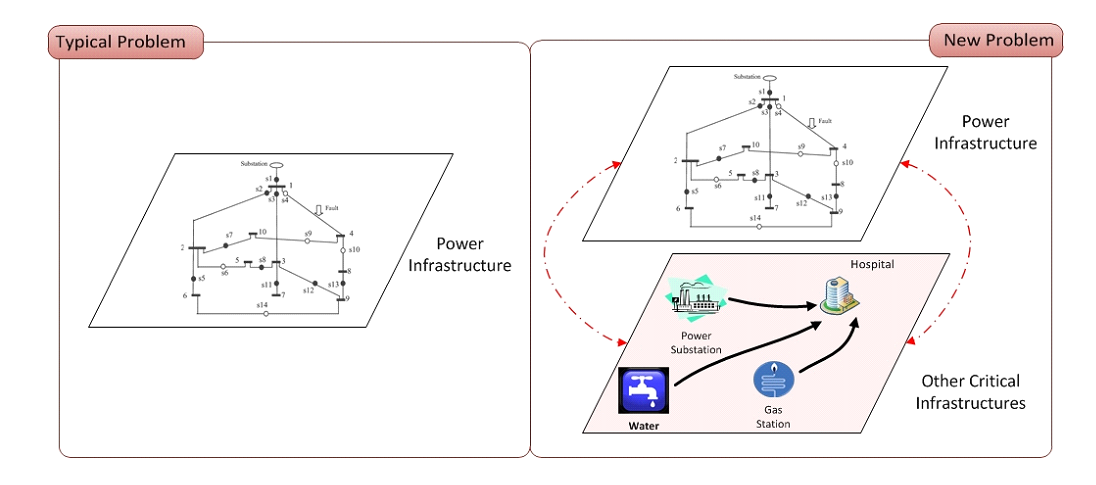
Problem Definition
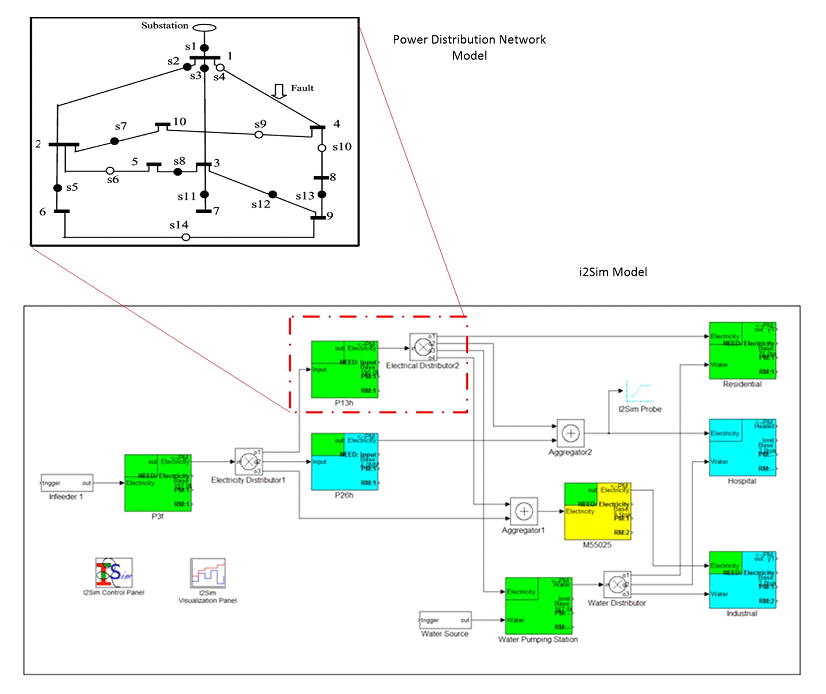
Solution using I2Sim
by Abdullah Alsubaie
The problem of frequency-dependence in transmission line modelling has been the subject of many researches for many years. Despite the progress made in modal-domain models (FD-Line and FDQ-Line), inaccuracy problems were detected in their response due to the frequency-dependent transformation matrices that relate phase and mode quantities. The FD-Line assumes real constant transformation matrices within the frequency range of study (even though valid in the case symmetrical line configurations) that leads to inaccurate results in cases of strongly asymmetrical multi-circuit line configurations (unbalanced lines, untransposed lines, or buried cables). The FDQ-Line model addressed this problem by synthesizing the transformation matrices with rational function approximations with real negative poles. The main difficulty of this model, however, is that the eigenvectors of the transformation matrices are not uniquely defined at each frequency and are highly-dependent on the scaling ("normalization"). Phase-domain line models based on the idempotent decomposition theory (Idempotent Line and Universal Line Model) seem sturdier than the model-domain models since the transformation functions are scale-independent. In this category, Idempotent Line models were found to be inefficient due to the need to approximate the elements of the idempotent coefficient matrices and using considerably larger (almost more than double) number of poles in the rational function compared to the FD-Line model for an identical case. The Universal Line Model (ULM) is currently used as an overhead transmission line and underground cables module in EMTP tools such as PSCAD and EMTP-rv. However, using unstable complex poles in the Vector-fitting algorithm of ULM, passivity violation and numerical instability problems have been encountered in the simulation of this model. Therefore, in this research the purpose is to develop an accurate and stable transmission line model, which can be efficient, reliable, and easy to implement for a general class of simulation in the EMTP.
by Arash Tavighi
Safety and security of an urban community rely heavily on a system of interdependent critical infrastructures (e.g. power and water systems). This level of dependency gives rise to vulnerability that is encountered in such complex systems, which must be accounted for by a proper disaster management. Only then can decision-makers and responders react effectively to any major failure in a timely manner. In this research, a novel system is proposed to assist disaster managers during emergency by optimizing the reallocation and distribution of the available limited resources among a set of interconnected critical infrastructures. It is a learning system that consists of a well-known machine learning technique called Reinforcement Learning (RL) and an infrastructure-interdependency simulator, i2Sim. This RL agent is capable of building up experience from a massive number of simulated scenarios that are generated by i2Sim. This intelligent agent is able to discover the underlying statistical regularities that distinguish the optimum path from the non-optimum ones. We show that by exposing such an intelligent agent to a large sequence of simulated disaster scenarios, we can capture enough experience to enable the agent to make effective decisions.
by Mohammed Talat Khouj
The objective of this project is to provide a clear derivation of the Multi-Area Thévenin Equivalent Concept (MATE) including current- and voltage dependent sources. The links concept in MATE is advantageous in representing branches connecting subsystems. MATE deviates from Diakoptics and from the Modified Nodal Analysis (MNA) methods in the way it is solved, by manipulating the submatrices in a form that preserves the individuality of the internal subsystems while solving their interdependences at the level of Thévenin Equivalents. The generalization presented in this work expands the link branch equations to dependent, coupled, linear or nonlinear relations, thus resulting in unsymmetrical matrices. Its significance occurs when complex control systems and power system equations are simultaneously solved in an Electromagnetic Transients Program (EMTP). In this case, exact results can be achieved with less computational effort for power system dynamics studies. A test case with simulation results illustrates the main modelling concepts.
This project presents fundamental concepts associated with the method of Shifted Frequency Analysis (SFA) for modelling electric circuit transients at frequencies close to the fundamental rated power frequency (50Hz or 60Hz). In a Smart Grids scenario, where the inertia of the generating sources is much less than at the transmission system level, electric transients simulation tools like the Electromagnetic Transients Program - EMTP become particularly important to assess the impact of distributed generation and voltage and frequency dynamics. With SFA implemented in the EMTP, very accurate results can be achieved with relatively large time steps that can trace the envelopes of transient voltages and currents around the fundamental frequency. If required, instantaneous values can be obtained directly from the “dynamic phasor solution” obtained with SFA. This work presents a rigorous mathematical derivation of SFA based on the Hilbert transform. Error analysis is performed in terms of the integration time step size and the width of the frequency band around the fundamental frequency. A test case illustrates the main modelling concepts.
This project presents a general algorithm to calculate an optimal time step size and a maximum simulation time for EMTP-based programs. This is of particular importance for new users of EMTP-based programs, since the user is responsible for setting up these parameters before running a simulation case. The selection of the time step size affects the precision of the simulation. The time step size depends on the maximum frequency expected in the phenomena, which is normally unknown, a priori. A robust algorithm is presented here based on all the input data given for the circuit under simulation. The proposed calculation process is based on single- or multi-phase uncoupled or coupled circuits, with lumped or distributed parameters. Simulations are given demonstrating the effectiveness of the proposed rules. A future challenge will be the creation of a methodology capable of adapting the time step size dynamically.
Due to the environmental impact of electricity generation as well as the increasing demand for it, there is a need for alternative technologies that can assure not only the needed electricity supply with good quality and low price, but also the efficient use of the natural resources. One of these alternative technologies is Distributed Generation (DG). In some locations, the integration of distributed generation (DG) in distribution systems is increasing to high penetration levels. This is due to factors such as environmental concerns, loss reduction rates, and the development in technologies for small-scale power generation. Penetration of DGs has an impact on distribution system operational concerns, such as voltage profile, voltage stability, power flow, power quality, reliability, control and protection. In this study a novel method is used for analysing the voltage profile in a distribution system with or without DG, and identifying the weak buses from the voltage collapse point of view. This method uses a voltage-dependent model for the system load which avoids the need for a power flow solution and suitable for real time online operation. The method is also useful to determine the best locations for installing new DG units based on the sensitivity of the bus voltages to the changes of power. The probabilistic nature of both the renewable energy resources and the load demand are important factors in placing the DG units in distribution systems. The next stage of development is to use the Shifted Frequency Analysis (SFA) method to model the system dynamics and controllers in low inertia distributed generation units like solar and wind.
by Nafiseh Nikpour
With the roll out of smart metering technology, users’ electricity consumption and different load patterns are playing a key role in DMS (distribution management system). The Smart Grid evolution has brought in new concepts such as VVO (Voltage VAR optimization), distribution generation with alternative energy sources, real time simulation and contingency analysis, and load management. With the advent of Distributed Generation, the behaviour of the loads must be better understood to optimize feeder operation and decrease losses. In this project, we are working on load management with focus on load disaggregation. We use time series voltage and current data generated by smart meters to categorize different types of loads. EMTP techniques are being used to extract key signatures of the load that can be used to separate the various load components. The work is being validated using BC-Hydro and UBC feeder data.
by Shima Shojae
To accelerate the simulations of power system dynamics, the following techniques are being used in an EMTP solution frame: MATE (Multi Area Thévenin Equivalent), multi-rate, parallel processing and SFA (Shifted Frequency Analysis). The work is based on the MATE technique and consists in the partitioning of a large network into time-decoupled sub-networks. The system state variables being updated by one particular subsystem are required by other subsystems only in the form of past or history values. Using MATE, various subsystems running at different time steps can be brought together in a common solution frame. In most instances, a disturbance occurring in a large power network causes only a small part of it to enter into a fast-dynamic mode, while most other sub-networks will remain in slow dynamics. The capability of solving each system according to its own rate requirements results in considerable savings in solution times. In addition the MATE solution is easy to parallelize in multicore machines. Beyond the capability of combining systems at different speeds, slow dynamic networks can be solved with large integration steps and high accuracy using the Shifted Frequency Analysis (SFA) representation. In a number of quasi-steady state problems, like transient stability analysis, SFA can more accurately represent the dynamics and control mechanisms of the system. This is particularly important in low inertia power distribution systems with wind and solar generation.
by Verónica Adriana Galván Sánchez